A bug hotel is part garden art and part winter habitat for beneficial insects, the garden army that helps to keep the bad bugs under control. If you are an organic gardener like me, then you will want to be sure that there is a place in your garden for beneficial insects to lodge for the winter. Next spring, when they wake up, lay eggs, and sweep your plants clean of aphids and mites, you will thank me. Here is how to make one for this weekend project.
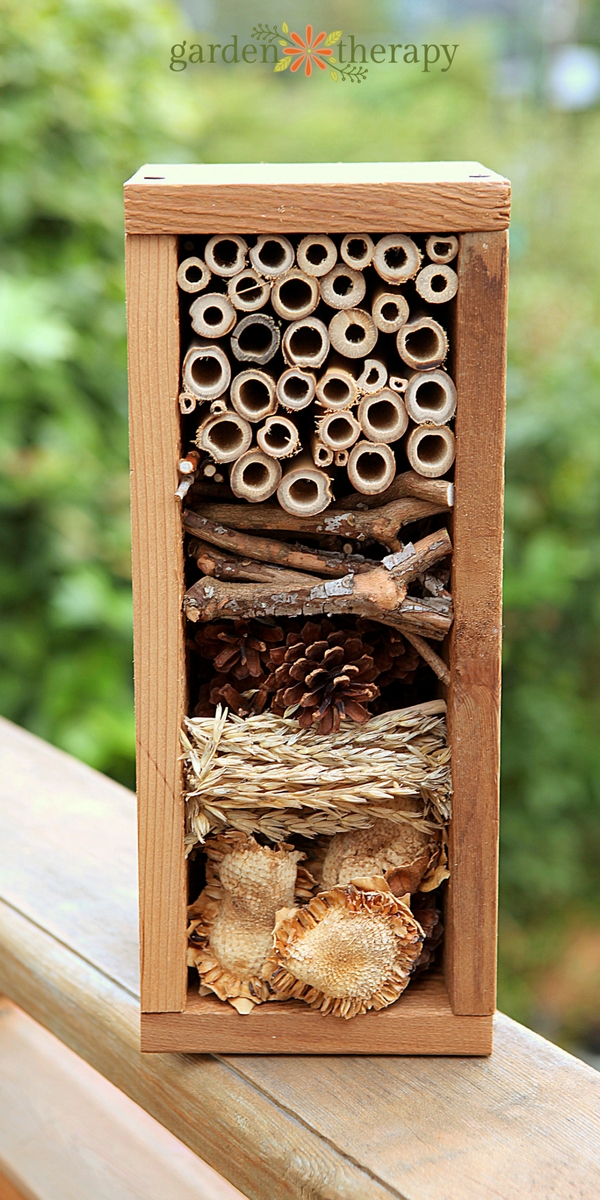
Build a Bug Hotel
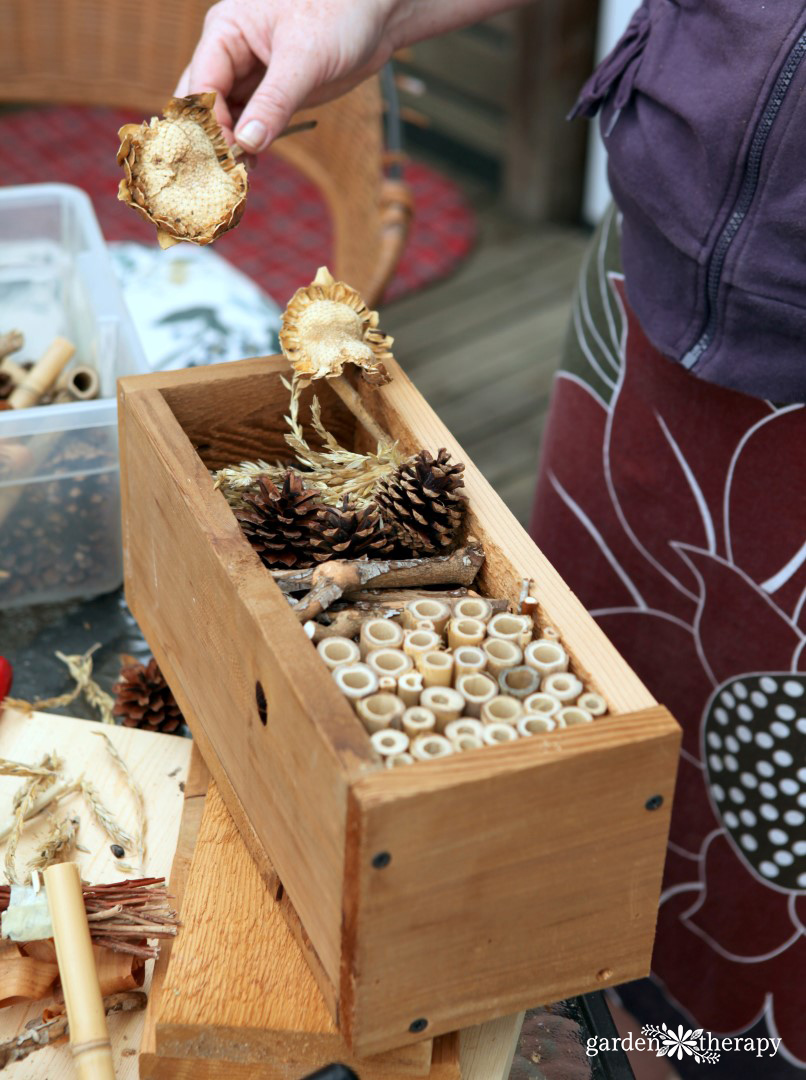
Oftentimes these decorative displays of plant material intended to provide shelter to overwintering insects are called “bug hotels” or “insect houses.” Perhaps they should be called “bug hostels” because the rooms are available to all but they do need to bring their own sleeping bag. Ok, so bugs don’t have sleeping bags, but some do bring their eggs or larva (sorry) for winter protection and gestation, while others have been known to fill up the hole with mud behind them. Setting up different protected areas in your bug hostel will let the bugs find a room that suits them and prepare it as they wish.
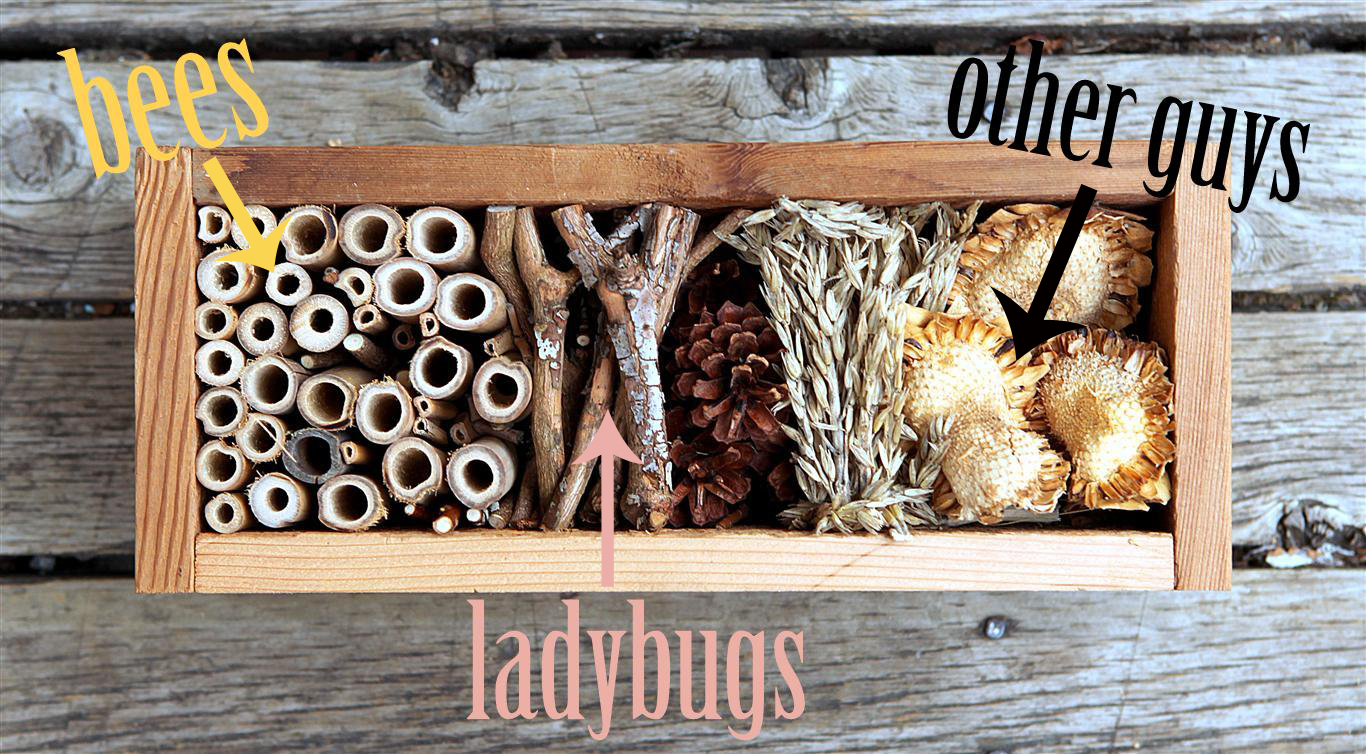
Bees
Many garden bees are ground dwellers so they won’t have a need for a hotel room. They will dig a little hole in the soil for winter hibernation and you may see some groggy bumblebees when you are out digging in early spring if you wake them too early. Solitary bees, however, like to nest in hollow stems for the winter. Contrary to their title, they will often pack a number of bees in a stem before closing off the opening with some mud and then having a good snooze until spring.
Ladybugs
Ladybugs like to overwinter as large groups in between dry plant material. Some twigs packed together give the ladybugs plenty of room to squeeze in and wait for warmer days and eating aphids. More about ladybugs as garden helpers in this post on attracting beneficial insects.
Beetles, Spiders, Lacewings and Friends
Many other insects will have all sorts of nesting needs. By providing a variety of plant material in your bug hostel you will encourage all sorts of garden friends to lodge. How can you be sure that you are only providing shelter for beneficial insects? Well, you can’t. It’s a tough world out there and at times bad bugs (earwigs – yuck!!) will move in. Some may even eat their neighbors. You can’t control what happens in the bug hostel, just trust that if you provide enough space for the good guys, you can create balance in the garden.
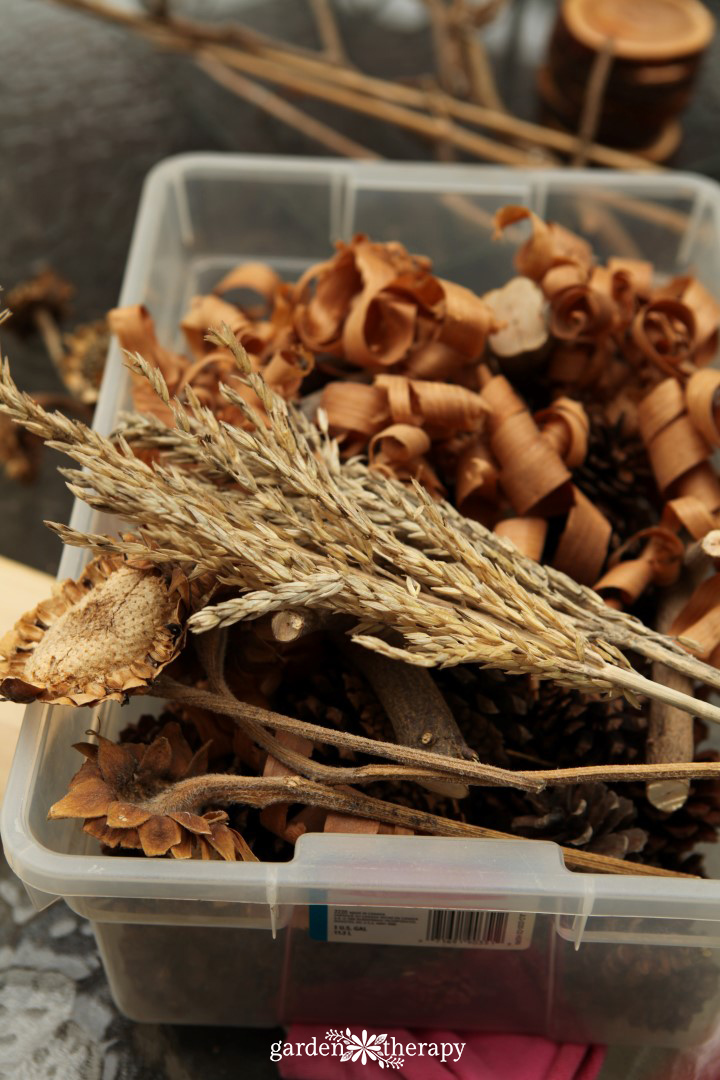
Materials
- Cut bamboo pieces, stems, twigs, seed heads, pinecones, wood shavings, lichen
- Using 3/4″ thick cedar or other rot-resistant wood. Cut the following pieces:
- top: 5 1/2″(h) x 5 1/2″(w)
- bottom: 5 1/2″(h) x 5 1/2″(w)
- back panel: 12″(h) x 5 1/2″(w)
- left panel: 12″(h) x 4 3/4″(w)
- right panel: 12″(h) x 4 3/4″(w)
- Weather-resistant screws between 1 1/4″ 1 1/2″ long. #6 or #8 size
- Drill
- Hanging hardware
Make it!
1. Cut cedar boards to the dimensions listed using a table saw or have them cut at your local hardware store if you don’t have one.

2. Screw the box together by drilling pilot holes first through.

3. Arrange plant materials within the structure, packed tightly so it will stay put, but with lots of available crevices for the bugs.
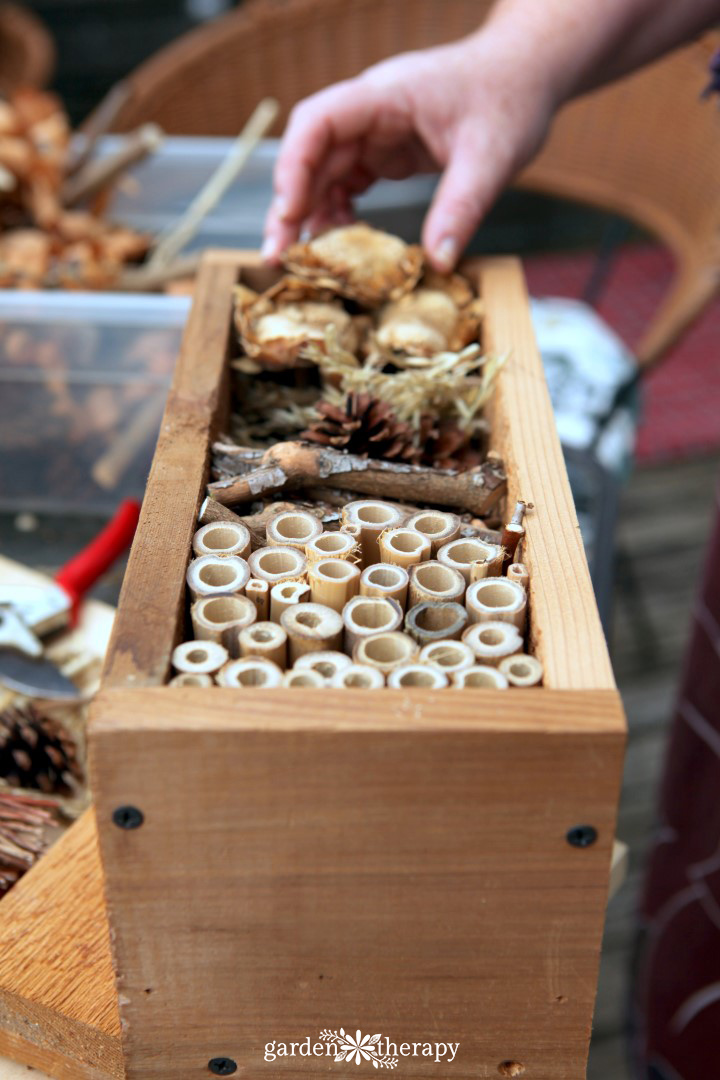
4. Affix hanging hardware and hang in an area of the garden that is close to where you want the bugs next season.

I chose to hang the bug hotel on my fence near the garden so the insects will emerge next spring near the plants.
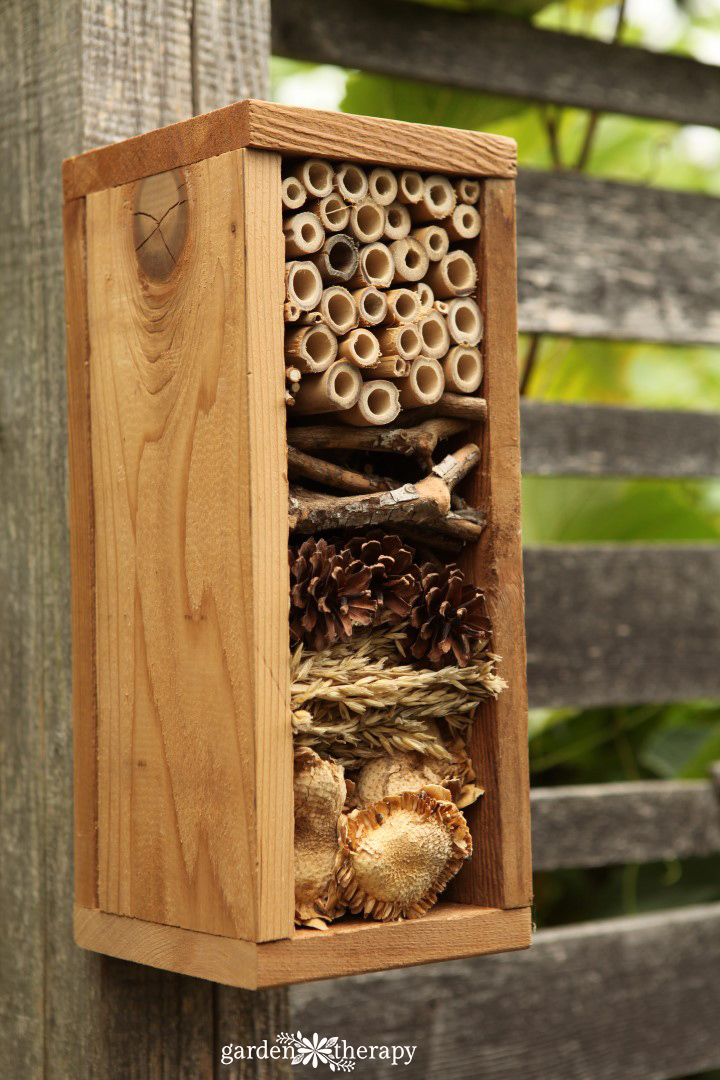
More Organic Gardening Ideas
I have plenty more articles here on Garden Therapy and my other blogs about organic gardening and beneficial insects as I am a passionate organic gardener!
Original article and pictures take gardentherapy.ca site
Комментариев нет:
Отправить комментарий